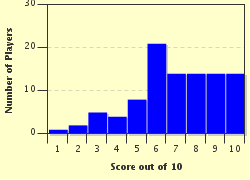Quiz Answer Key and Fun Facts
1. Like many chemical elements, the word 'nitrogen' is derived from the Greek language. Associated with a common salt of this element, what does the name mean?
2. We are exposed to nitrogen every moment of our lives! In what form does this exposure take?
3. What do wart removal and super-cooling for computers have in common? Nitrogen in liquid form. But how cold really is it? It is MUCH colder than any place on earth!
4. Nitrogen gas, or more correctly dinitrogen gas, N2, is extremely unreactive. What feature of the dinitrogen molecule causes this great inertness? N is the chemical symbol for nitrogen and a bond is the attractive force between two atoms.
5. Nitrogen is in the air around us, but does it dissolve in water?
6. Chemical reactivity is based on the electronic configuration of the atoms making up the element or compound. What is the electronic configuration of elemental nitrogen? As a hint, the atomic number of nitrogen is 7, so there must be 7 electrons in each atom.
7. Nitrogen can also be found in essential chemical compounds in our bodies. In which of the following classes of compounds can nitrogen always be found?
8. One common anesthetic is a simple nitrogen compound called nitrous oxide. Its chemical formula is N2O, meaning each molecule has two nitrogen atoms and one oxygen atom. What is the common name for nitrous oxide?
9. Murder most foul! What nitrogen compound is often used as a lethal poison by the villains in mystery novels?
10. Which vitally important, nitrogen-based, fertilizer is manufactured in large quantities by the Haber-Bosch process?
Source: Author
MikeMaster99
This quiz was reviewed by FunTrivia editor
rossian before going online.
Any errors found in FunTrivia content are routinely corrected through our feedback system.

